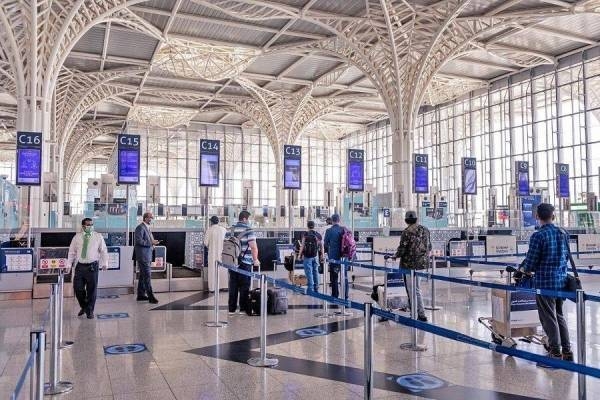The air traffic in Saudi Arabia saw a significant surge of 26% in the year 2023, with approximately 112 million passengers traveling through various airports in the Kingdom. This information was revealed in the Air Transport Statistics Bulletin for 2023 published by the General Authority for Statistics (GASTAT). The number of passengers on international flights reached 61 million, showing a record increase of 46% compared to the previous year, while domestic flights saw a 9% increase to 51 million passengers. The bulletin also highlighted an increase in the number of domestic and international flights at Saudi airports, with a 2% and 36% increase respectively.
The quantities of cargo handled at Saudi airports also saw an increase of 7%, reaching 918,000 tons in the year 2023. December was noted as the highest month in terms of the volume of shipping, with a rate of 93,000 tons. The Kingdom achieved significant progress in international air connectivity, moving up nine places to 18th place compared to 2019. This progress was driven by an increase in the total number of countries arriving at Saudi airports, which reached 86 countries, marking a 12% increase over 2022. The number of destinations also increased to 148, a 47% increase from the previous year.
In terms of passenger traffic, a total of 116 million passengers traveled through all of the Kingdom’s airports in 2023. King Abdulaziz International Airport in Jeddah emerged as the top airport with 45 million passengers, followed by King Khalid International Airport in Riyadh with 37 million passengers, and King Fahd International Airport in Dammam came in third with 13 million passengers. These impressive results confirmed that the air traffic sector in Saudi Arabia has successfully recovered from the impacts of the coronavirus pandemic. The progress made in 2023 reflects the success of the Kingdom’s efforts in air connectivity programs and partnerships, aligning with the goals of the Saudi Vision 2030.
The Air Transport Statistics Bulletin is an annual publication that provides valuable insights into the air transport system in Saudi Arabia, offering statistics and indicators on passenger and freight movements through commercial and private planes. The data presented in the bulletin highlights the growth and development of the air traffic sector in the Kingdom, showcasing the increase in passenger numbers, flight frequencies, cargo volumes, and international connectivity. This information is essential for stakeholders in the aviation industry, policymakers, and researchers to understand the trends and dynamics of air transportation in Saudi Arabia and to plan for future investments and developments in the sector.
It is clear from the statistics presented in the bulletin that the air traffic sector in Saudi Arabia is experiencing robust growth and recovery following the challenges posed by the coronavirus pandemic. The significant increase in passenger numbers, flight frequencies, and cargo volumes demonstrates the resilience and adaptability of the aviation industry in the Kingdom. The progress made in international air connectivity also underscores Saudi Arabia’s commitment to enhancing its position as a key player in the global aviation market and promoting economic growth and development through air transportation.
Overall, the data presented in the Air Transport Statistics Bulletin for 2023 paints a positive picture of the air traffic sector in Saudi Arabia, showcasing the Kingdom’s ability to bounce back from adversity and achieve substantial growth in passenger numbers and cargo volumes. The continued focus on enhancing air connectivity, expanding flight frequencies, and improving airport infrastructure will be crucial in sustaining this growth momentum and further establishing Saudi Arabia as a leading player in the global aviation industry. With ongoing efforts to align with the goals of the Saudi Vision 2030, the future looks promising for the air traffic sector in the Kingdom, with opportunities for continued expansion and development on the horizon.








